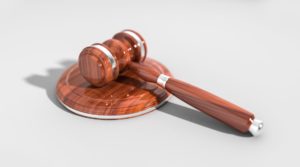 On Halloween, the United States Court of Appeals for the Federal Circuit delivered its opinion in Arthrex, Inc., v. Smith & Nephew, Inc. that the appointment of the Patent Trial and Appeal Board’s Administrative Patent Judges (“APJs”) violates the Appointments Clause of the U.S. Constitution. The background of this case involved Arthrex receiving a final written decision in the inter partes review of its patent finding the claims unpatentable as anticipated. Anthrex subsequently appealed the written decision of the PTAB arguing that the APJs presiding over the inter partes review were not constitutionally appointed.
On Halloween, the United States Court of Appeals for the Federal Circuit delivered its opinion in Arthrex, Inc., v. Smith & Nephew, Inc. that the appointment of the Patent Trial and Appeal Board’s Administrative Patent Judges (“APJs”) violates the Appointments Clause of the U.S. Constitution. The background of this case involved Arthrex receiving a final written decision in the inter partes review of its patent finding the claims unpatentable as anticipated. Anthrex subsequently appealed the written decision of the PTAB arguing that the APJs presiding over the inter partes review were not constitutionally appointed.
A brief background on the appointment and power of the APJs is required to understand the potential impact of this decision. APJs are appointed by the Secretary of Commerce in consultation with the Director of the USPTO. This leads to the question of whether the APJs are defined as inferior officers or principal officers. The Court described the functions of APJs in determining how to define these officers and highlighted the significant discretion APJs exercise when carrying out their functions in the inter partes review process. It was noted that their decisions on patentability are final and subject only to rehearing by the Board or appeal to the CAFC. The Court then described the defining characteristics of inferior officers as compared with principal officers as being: (1) whether the officer has a superior, (2) whether the superior was appointed by Presidential nomination, and (3) the level of supervision and direction over the officer by the superior.
The Court then explained that the two presidentially-appointed officers at the USPTO, the Secretary of Commerce and the Director of the USPTO, provide direction to the USPTO. While these officers provide direction, the Court held that neither officer individually nor combined exercised sufficient direction and supervision over APJs to render them inferior officers. The Court’s opinion was based on the lack of independent statutory authority to review the final written decision by the APJs before that decision is issued on behalf of the United States. Another factor considered by the Court was the removal power over an officer, which the Supreme Court described as “a powerful tool for control.” APJs, the court noted, may be removed “only for such cause as will promote the efficient of the service,” meaning that the APJ may be removed when his or her misconduct is likely to have an adverse impact on the agency’s performance. With this in mind, the Court held that APJs are principal officers and thus the current structure of the Board violates the Appointments Clause because the APJs are appointed by the President and confirmed by the Senate.
In an effort to resolve the Constitutional conflict, the Court suggested removal of the employment protections that currently exist and providing the presidentially-appointed officers at the USPTO broad removal powers over APJs. It is unclear what the lasting impact of this decision will be, but recently, the House Judiciary Committee’s Subcommittee on Courts, Intellectual Property, and the Internet conducted a hearing that included a discussion of the Arthrex decision. A variety of solutions were presented and discussed to resolve the issue created by the Arthrex decision and time will tell if a legislative fix will soon emerge.

